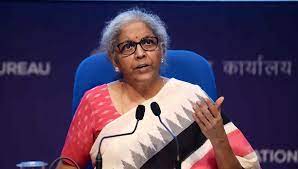CURRENT AFFAIRS
Get the most updated and recent current affair content on Padhaikaro.com
Virtual Digital Asset
- Vaid's ICS, Lucknow
- 04, Feb 2022

Why in News?
Finance Minister Nirmala Sitharaman, in her Budget 2022 speech (February 1), announced a 30 per cent tax on income from virtual digital assets.
Rationale behind:
There has been a phenomenal rise in such transactions and the magnitude and frequency of these transactions have made it imperative to provide for a specific tax regime.
What are virtual digital assets and how are they different from digital currency?
In simple words, it basically means cryptocurrencies, DeFi (decentralised finance) and non-fungible tokens (NFTs). Prima facie, this excludes digital gold, central bank digital currency (CBDC) or any other traditional digital assets, and hence aimed at specifically taxing cryptocurrencies.
As per the Finance Bill, a virtual digital asset is proposed to mean any information or code or number or token (not being Indian currency or any foreign currency), generated through cryptographic means or otherwise, by whatever name called, providing a digital representation of value which is exchanged with or without consideration, with the promise or representation of having inherent value, or functions as a store of value or a unit of account and includes its use in any financial transaction or investment, but not limited to, investment schemes and can be transferred, stored or traded electronically.
- Non fungible token and; any other token of similar nature are included in the definition.”
Does the 30% tax mean crypto assets have been legalised in India?
A tax law can’t make anything legal or illegal—that has to be done via a separate statute.
Facts for Prelims :
Hynniewtrep National Liberation Council (HNLC):
The outlawed Hynniewtrep National Liberation Council (HNLC) has claimed responsibility for the recent low-intensity IED blast.
- The HNLC, which demands a sovereign Khasi homeland in Meghalaya, is a breakaway faction of the Hynniewtrep Achik Liberation Council (HALC), the first militant tribal outfit of the state, formed in the mid-1980s.
- ‘Hynniewtrep’ refers to the Khasi and Jaintia communities, and ‘Achik’ to the Garo community.
The HNLC is seen as representative of Khasi identity and pride, and most of the top leadership is based out of Bangladesh.
Safforn Bowl Project:
North East Centre for Technology Application and Reach (NECTAR) under Saffron Bowl project has identified few locations in Arunachal Pradesh and Meghalaya for saffron cultivation.
- Saffron production has long been restricted to a limited geographical area in the Union territory of Jammu & Kashmir.
- Pampore region, in India, commonly known as Saffron bowl of Kashmir, is the main contributor to saffron production, followed by Budgam, Srinagar, and Kishtiwar districts.
- Saffron has traditionally been associated with the famous Kashmiri cuisine.
- It’s its medicinal values were considered as part of the rich cultural heritage of Kashmir.
- As saffron growing was confined to very specific areas in Kashmir, its production remained limited.